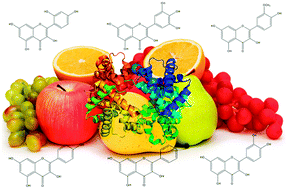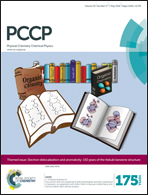Biophysical exploration of protein–flavonol recognition: effects of molecular properties and conformational flexibility†
Abstract
The current work explores the biomolecular recognition of a series of flavonols by a protein and then uncovers the influences of the structural features of flavonols and the protein’s own characteristics, e.g. the dynamics and flexibility, on the bioavailability of flavonols by using the pivotal biomacromolecule hemoglobin as a model. The experimental results revealed that flavonol may lead to a notable decrease in the steady-state fluorescence intensity of the β-37 Trp residue, and in the meantime the R–T transition of the protein transpired. Such noncovalent recognition forms the ground-state adduct, with an association intensity of 3.991 × 104 M−1 in the reaction process, which has already been authenticated by the detailed analysis of time-resolved fluorescence and UV/vis absorption spectra. Furthermore, flavonol can form hydrogen bonds and π-conjugation effects with several amino acid residues on the polypeptide chain, for example, Trp-37, Arg-40, Asp-99 and Asn-102, and this event would induce self-regulation of the compact, regular conformation of the protein to a certain extent, which explicitly corroborates the results of circular dichroism. According to the study of molecular docking and structure–activity relationships, we could see that the recognition capacities of the protein–flavonols are inversely interrelated with the C log P values of the flavonol molecules. Moreover, the properties of the substituents in the structural B-ring unit of flavonols, i.e. polarity, position and number, will also prominently affect the degree of affinity and bioavailability of the protein–flavonol complexes. The analytical results of molecular dynamics (MD) simulation testified that the discussions of the structure–activity relationships are entirely logical, and the conformations of the amino acid residues forming noncovalent interactions tend to be stable in the MD simulation, as further elucidated from the dynamics data. Plainly, molecular recognition of the protein–flavonols might noticeably cause relatively large changes in protein flexibility, and then manifest different recognition strengths and corresponding biological activities. This issue will be carefully validated by the interpretation of root-mean-square fluctuation.


 Please wait while we load your content...
Please wait while we load your content...